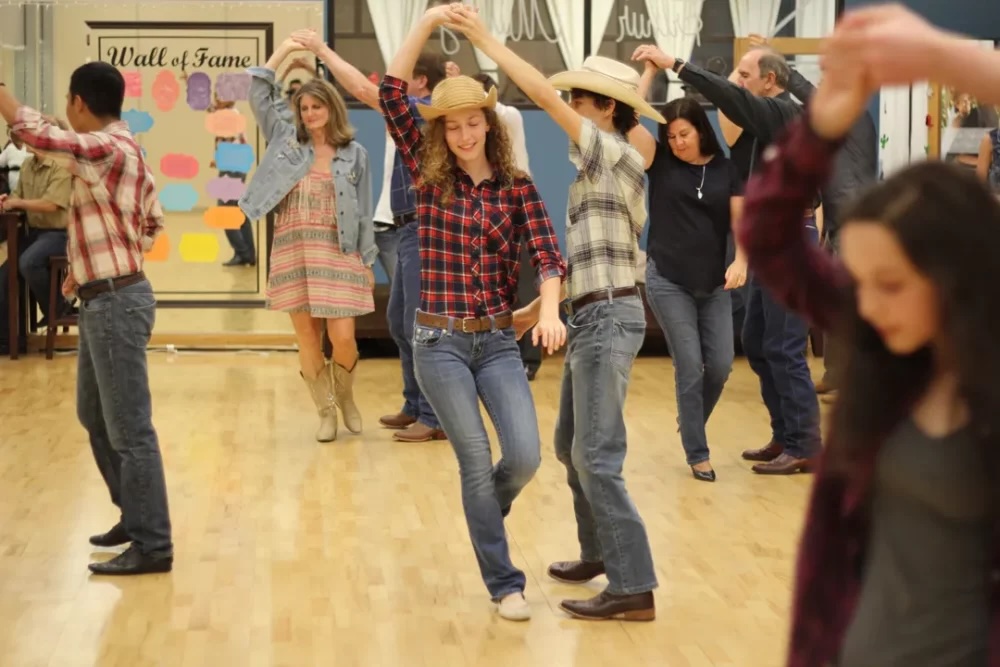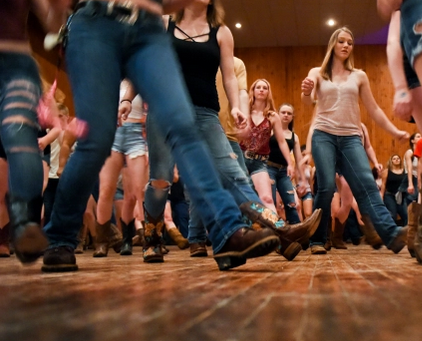
Couple Dancing along side Line Dancing
Couple Dancing along side Line Dancing: Harmonizing on the Dance Floor - Country style dancing has long been a cornerstone of social gatherings, bringing people together through movement, rhythm, and shared enjoyment. Whether you're gliding around the floor with a partner or stepping in sync with a group, country dancing fosters connection, energy, and fun.
The History of Country Linedance / Couple Dancing
Country dancing in North America has roots stretching back to European folk traditions, where both partner and group dances were common. As immigrants brought their dances to the New World, styles evolved to match new music trends. In the early days of country music, square dancing and partner waltzes were the main forms of social dance, often accompanied by fiddles and banjos.
Line dancing began gaining traction in the 1970s and 1980s, influenced by disco, pop, and country-western music. It offered a structured yet social way for people to dance together, no partner required. Over time, it became a staple at honky-tonks, dance halls, and country music festivals, where it found a natural synergy alongside couple dancing.
Today, both line dancing and partner dancing coexist harmoniously at social events, creating an inclusive atmosphere where everyone can join in, regardless of experience level.

Different Types of Country Dancing
Partner Dances
Partner dances are designed for couples and generally follow a counterclockwise rotation around the dance floor. These dances require communication, rhythm, and a sense of teamwork.
- Two-Step: The quintessential country dance, featuring a quick-quick-slow-slow rhythm. This dance is easy to learn and offers room for stylish turns and improvisation.
- West Coast Swing: A more contemporary and smooth style, danced in a slot formation. It's known for its intricate footwork and playful interactions between partners.
- East Coast Swing: A lively, bouncy dance that's fun for upbeat country songs. It has a six-count basic step and plenty of room for spins and turns.
- Country Waltz: A graceful dance performed in 3/4 time, perfect for slower ballads and romantic moments on the dance floor.
- Nightclub Two-Step: A smooth, flowing dance that works beautifully with slower, emotional country songs.

Line Dancing
Line dancing is a choreographed style where individuals dance in rows, executing a repeated sequence of steps in sync with the music. This form of dance allows large groups of people to dance together without needing a partner.
Some popular line dances include:
- Boot Scootin' Boogie: A classic that has stood the test of time, often danced to Brooks & Dunn’s hit song.
- Watermelon Crawl: A high-energy routine that matches the upbeat tempo of Tracy Byrd’s song.
- Tush Push: A great dance for beginners that can be done to a variety of country songs.
- Electric Slide: A crossover dance that has found its place in country clubs and social dance floors alike.
Why Line Dancing and Partner Dancing Go Hand in Hand
At country dance events, line dancing and couple dancing work together to create a lively and diverse dance floor. When a fast-paced song comes on, line dancers can take the floor while couples rest or switch partners. When a romantic ballad plays, couples can enjoy a slow dance while others step aside to enjoy the moment.
This balance ensures that everyone has a chance to participate, making country dance halls welcoming to all, whether you're attending solo or with a partner. Line dancing also serves as a great introduction for beginners, helping them get comfortable with rhythm and movement before trying partner dances.
Dancing Together: Floor Etiquette
To keep the dance floor fun and safe for everyone, it's essential to follow a few basic etiquette rules:
- Respect the Dance Floor: Partner dancers should stick to the outer lanes, moving counterclockwise, while line dancers take the center.
- Avoid Collisions: Stay aware of your surroundings. If you're dancing as a couple, navigate smoothly. If you're line dancing, stay within your designated area.
- Communicate: If a dance involves sudden movements, be mindful of nearby dancers.
- Be Courteous: If you bump into someone, smile, apologize, and keep the good vibes going!
Get Out and Dance!
Whether you're gliding across the floor with a partner or stepping in sync with a group, country dancing is all about connection and joy. Social dance events bring together people of all ages and backgrounds, creating a vibrant, welcoming space for everyone.
If you're new to country dancing, don't be shy! Many dance halls offer beginner lessons before social dances start, making it easy to jump in and join the fun. So dust off your boots, hit the dance floor, and experience the magic of dancing together!
